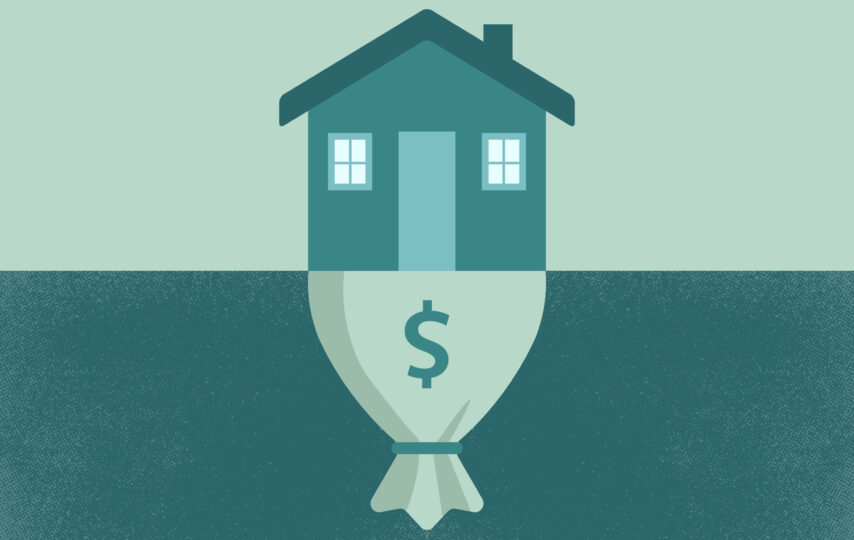The maximum loan-to-value (LTV) ratio for a typical cash-out refinancing is 80%.
The term “loan-to-value ratio” (LTV) is used by lending institutions to describe this proportion.
Take into account the amount you still owe on your mortgage when figuring out how much equity you have in your home.
Example of a standard cash-out refinancing process
- Property worth $400 000
- $320,000 is the maximum conventional refinancing loan amount (80% of the home’s value).
- $250,000 is the current mortgage balance.
- Maximum withdrawal: $70.00
This homeowner has an initial equity position of $150,000 in the residence. (Because the outstanding loan sum is $250,000 and the house is worth $400,000)
However, this borrower is limited to a $70,000 cash-out since she must keep 20% of the equity in the house.
Lenders often reduce the amount of a borrower’s cash-out option by the amount of any second mortgage secured by the home’s equity.
The reason why lenders put a cap on how much equity you may remove is, so they don’t lose money in the event of a default. Follow this link: https://lendingbeeinc.com/cash-out-refinance and learn more about this issue.
Refinancing conditions for cash-out
First-time homeowners and cash-out refinancers have the same criteria.
Refinancing cash-out requirements vary by lender and loan type. However, in most cases, you’ll require:
- A residence with more than 20% equity.
- A fresh valuation to back up your home’s asking price
- Need a credit score of 620 or above to apply
- Minimum 43% income-to-debt ratio (including the additional loan).
- Eighty percent or less of the value of the property as collateral
- Proof of employment and financial stability
- Most refinancing with a cash-out component are subject to these standards.
Types of loans for cash refinancing
When it comes to cash-out refinancing, homeowners have three primary choices:
- Conventional loans: A typical cash-out refinancing permits borrowers with credit scores as low as 620 to borrow up to 80% of the value of their house.
- FHA loans: With an FHA cash-out refinancing, you are able to borrow 80% of the value of your house. The same upfront costs that are funded into the loan must be paid, as must an annual mortgage insurance charge, as with any other brand-new FHA mortgage. Usually, a minimum credit score of 600 is needed.
- VA loans: Although many lenders set the LTV at 90%, a VA cash-out refinancing (accessible to veterans, Reserve and National Guard members, active-duty military members, and certain surviving spouses) allows you to borrow up to 100% of the house’s worth. Unless you are a veteran with a disability linked to your service, upfront costs for VA cash-out refinancing loans are incorporated into the loan.
You should evaluate your existing mortgage and your eligibility for several cash-out refinancing loan options to determine which is best for you.
When would it be a good idea to remortgage and take out cash?
If you are able to secure a cheaper interest rate on the new loan compared to the previous one, a cash-out refinancing loan might be a terrific choice.
You may replace an adjustable-rate loan with a fixed-rate mortgage when you refinance with cash out, or you can pick a shorter loan term to decrease your interest payments overall.
There’s also the cash you’ll get after closing, which may be used for any purpose you see fit. Homeowners who have built up equity utilize the money for:
- Merging of debts
- Closing an existing home equity line of credit (HELOC)
- Remodeling the house
- Taxes on income are paid
Cash-out refinancing may also be used toward other worthwhile endeavors, such as a child’s college tuition.
But keep in mind that even with a low rate, you will be paying a lot of interest over the course of a new, long-term loan (perhaps 15 or 30 years of monthly payments).
For the reasons stated above, financial experts advise homeowners to only tap into their equity when absolutely necessary.
It is not advised to use home equity for low-return items such as a vacation or a new automobile.








